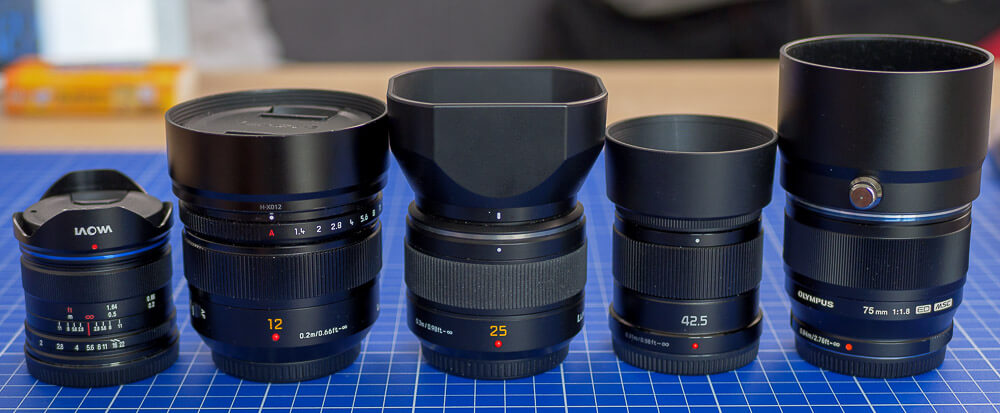Prime lenses a better choise?
A certainly provocative question, which actually also contains 2 aspects. I would like to share my experience on both.
Introduction
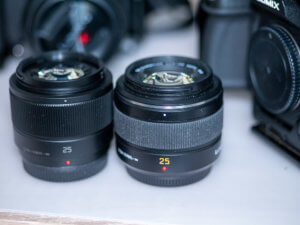 If you disregard the 100mm/2.8L macro in the Canon equipment, I had only sporadically lenses with fixed focal length. There was the really good 85mm/1.8, a 35mm/2.0 (not IS) and the 24mm/2.8. At that time I sold these lenses because they rarely found their way into my backpack, regardless of their optical quality.
If you disregard the 100mm/2.8L macro in the Canon equipment, I had only sporadically lenses with fixed focal length. There was the really good 85mm/1.8, a 35mm/2.0 (not IS) and the 24mm/2.8. At that time I sold these lenses because they rarely found their way into my backpack, regardless of their optical quality.
With the mFT equipment I was not sure for a long time, accordingly the change took quite a long time. Nevertheless, I only had zoom lenses at the beginning. And in the beginning, especially when you start out, the kit lens is sometimes better than its reputation.
My fixed focal lengths
Of course, I also expanded my mFT with zoom lenses over time to cover as wide a focal length range as possible. Today, this ranges from the Panasonic 7-14mm/4.0 to the Panasonic 100-300mm/4.0-5.6 II. Besides the Leica 45mm/2.8 macro, the only mFt equipment I had was the 20mm/1.7 II, an excellent lens.
Laowa C-Dreamer 7.5mm/2.0
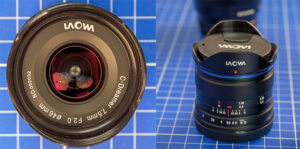 A super compact lens with very high speed. For landscape photography, stopping down to f2.8 is enough to get good results. In contrast to the Panasonic 7-14mm/4.0, filters can be screwed in here. The only drawback is that the lens is completely manual and therefore has no AF.
A super compact lens with very high speed. For landscape photography, stopping down to f2.8 is enough to get good results. In contrast to the Panasonic 7-14mm/4.0, filters can be screwed in here. The only drawback is that the lens is completely manual and therefore has no AF.
Leica 12mm/1.4
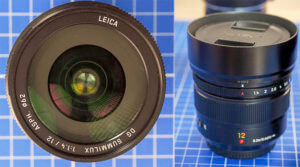 A wide-angle lens of the highest speed that leaves nothing to be desired in terms of workmanship. Sharpness is excellent even at f1.4 in the center and becomes very good at the edge from f 4.0. It is already quite heavy, but pleasant on the Lumix G9, but front-heavy on a smaller camera 😉
A wide-angle lens of the highest speed that leaves nothing to be desired in terms of workmanship. Sharpness is excellent even at f1.4 in the center and becomes very good at the edge from f 4.0. It is already quite heavy, but pleasant on the Lumix G9, but front-heavy on a smaller camera 😉
Panasonic 25mm/1.7
This lens is probably the focal length with the best price/performance ratio. Optical performance at open aperture not outstanding, but good. After the Leica 25mm/1.4, the Panasonic 25mm/1.7 did come back to me as part of a bundle with the Lumix GX80.
Leica 25mm/1.4
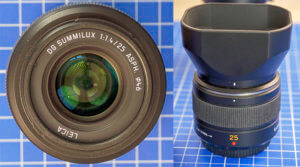 This lens was actually the target and there wasn’t necessarily going to be a Panasonic 25mm/1.7. At open aperture, however, the lens doesn’t quite live up to claims you’d expect from the famous name. I compared 25mm optics. The version II of this lens is supposed to be optically even a bit better.
This lens was actually the target and there wasn’t necessarily going to be a Panasonic 25mm/1.7. At open aperture, however, the lens doesn’t quite live up to claims you’d expect from the famous name. I compared 25mm optics. The version II of this lens is supposed to be optically even a bit better.
Panasonic 42,mm/1.7
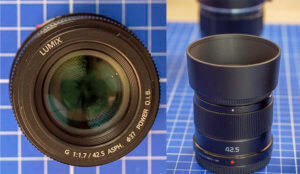 A very compact, short telephoto, ideal for portraits, landscape but also for details because it has quite a short closest focusing distance. The lens can almost be described as cute and also has the smallest filter thread at 37mm.
A very compact, short telephoto, ideal for portraits, landscape but also for details because it has quite a short closest focusing distance. The lens can almost be described as cute and also has the smallest filter thread at 37mm.
In terms of size, it also fits very well with the Lumix GX80 or smaller bodies in general.
Olympus 75mm/1.8
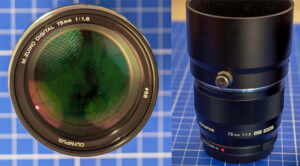 An excellent fast telephoto lens with the equivalent of 150mm focal length. If I had to rank it in order of optical quality, this lens would take 1st place.
An excellent fast telephoto lens with the equivalent of 150mm focal length. If I had to rank it in order of optical quality, this lens would take 1st place.
It’s still not uncomfortably large, very balanced in terms of weight on the Lumix G9.
Better than a zoom
The optical quality is good to very good on all of them, with the exception that at least my copy of the Leica 25mm/1.4 doesn’t really live up to its name. I would describe the Olympus 75mm/1.8 as brutally sharp.
To answer the question, my conclusion would be that zoom lenses are absolutely practical and only perform minimally worse than a fixed focal length under identical conditions.
But even such a comparison is actually unfair again and to the detriment of the zoom lens. Because compared to my 2.8/12-35mm at f 2.8, all fixed focal lengths have the advantage that they are already stopped down by 1 1/2 – 2 stops, where you then also achieve a higher sharpness.
Conclusion
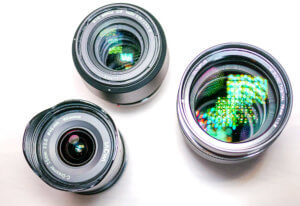 FFixed focal lengths are better simply because of their generally higher speed. They allow you to take pictures in borderline situations and/or shots with a shallower depth of field.
FFixed focal lengths are better simply because of their generally higher speed. They allow you to take pictures in borderline situations and/or shots with a shallower depth of field.
If you are interested in this, you should start with the 25mm/1.7 Lumix in my opinion, because it is very good in terms of price/performance.
ciao tuxoche
